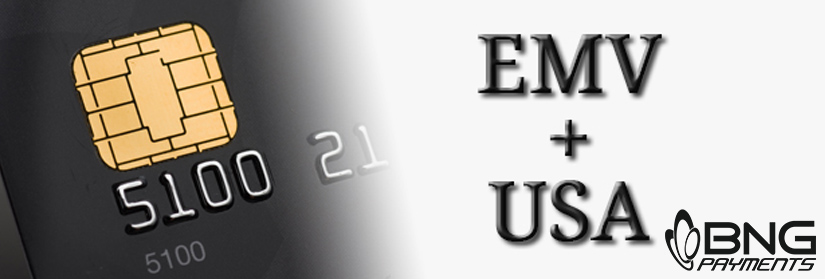
Alright, now that everyone has calmed down after the first blog (at least we hope you have).
If you’re a merchant, and haven’t lived under a rock for the last few years (no judgement) you’ve probably at least heard about EMV. Most of what you’ve heard is how it’s coming to take over your business and your soul.
The truth is a bit more complicated, (not nearly as exciting as soul possession) and involves a lot of explanation.
So let’s start at the very beginning (que music), and with cover the question of what EMV is, and what it means for your small business.
EMV is not actually a new thing, it’s been around in Europe for a decade as an anti-fraud prevention measure.
EMV is an acronym that stands for Europay, Mastercard, and Visa, who are the big founders of all the new chip cards and chip reader terminals in America.
The thought behind EMV is to cut into counterfeit card transactions.
It’s a measure to prevent “card present” fraud, since the chip is incredibly secure and nearly impossible to duplicate.
Europe has seen decreases in “card present” theft since implementing EMV chip and pin cards.
Many vendors in Europe were confused by American tourists not having chip cards until recently (oh Europeans, how they love to judge us).
Chip cards are the same to previous credit and debit cards, only now in the left corner they have a small microchip that is encrypted. It’s considered safer than the traditional magnetic stripe that is swiped (although all cards still contain their magnetic strip, and can be run as a non-chip card).
Chip cards also include a pin that is used as authentication, the chances of fraudsters having the chip copied are low, but having the chip and pin are nil.
One variation to the European system of chip cards is the U.S has a “chip and signature” option that Europe does not have.
Chip and signature still will have the chip card placed in the reader, but rather than entering their pin, they will be prompted to sign for the transaction like the old way.
It completely removes the extra security measure that makes chip cards effective in Europe.
It seems a bit silly to adapt the European method if we can’t do it properly. This is largely due to a culture difference in how Europeans experience transactions, verses how Americans experience transactions .
Europeans at restaurant for example, will have a wireless card reader brought to their table and pay there, rather than having the server take their card to the back to swipe the card away from the cardholder.
*sighs* Pull yourself together America.
Besides replacing all your equipment, you’re probably wondering if your monthly statement will increase in rates and fees friom EMV terminals.
They shouldn’t.
For starters, EMV doesn’t have to do with compliance charges, and therefore you won’t be penalized for not using EMV registers. So if you get mysteries calls from people saying by not having EMV machines you are no longer in Compliance and need to pay them it’s a lie. (We’re not saying you should start saying “your mama” jokes to these people, but we also aren’t saying you shouldn’t).
Okay that was a lot of information to take in, and we understand if your brain is a bit fried.
Luckily for you, we’ll be continuing our series of EMV next with a look at who EMV doesn’t apply to.
If you missed our previous blog about why merchants shouldn’t panic about EMV, here’s where you can read it.
Take a look at our services , and see what others have said about our service.
If you’d like to learn more about what steps to take with your own business, or would like a free EMV and credit card processing consultation, contact us here .
